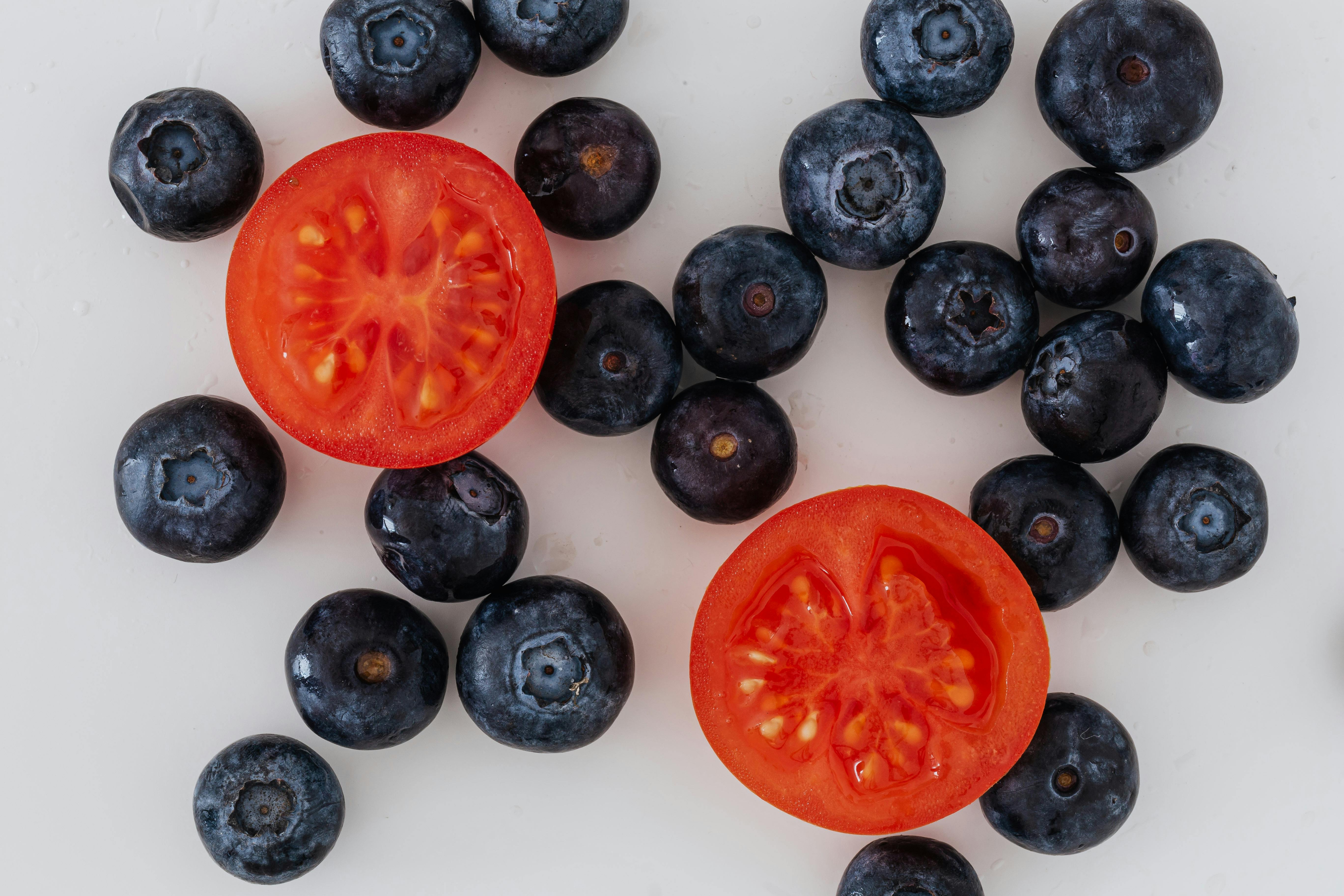Propagating blueberry cuttings is a great way to expand your berry patch or share plants with friends and family. In this guide, we will walk you through the process of taking blueberry cuttings and growing them into healthy, productive plants. Propagating blueberries is relatively simple and requires only basic materials and tools. With a little patience and care, you can quickly grow your own blueberry plants from cuttings.Preparing Blueberry Cuttings for Propagation involves taking cuttings from a mature blueberry bush and preparing them for rooting. The process begins by selecting healthy, mature, non-flowering stems that are pencil-thick and 6 to 8 inches long. Carefully clip the stem just below a node, using scissors or pruning shears. Remove all but the top two leaves from each cutting. Dip the base of the cutting in rooting hormone powder and then place it in a pot filled with a sterile commercial potting mix that is moist but not soggy. Plant the cuttings so that only the top two leaves are above ground. Place several cuttings in the same pot for best results. Water gently and cover the pot with a plastic bag to create humidity and keep soil moist until roots form. Place the pot in indirect light and keep it at room temperature (65-75°F). Check daily to ensure soil remains moist, misting if necessary. Roots should form in 4-6 weeks; after this time, remove plastic bag, water as needed, and begin fertilizing with an acid fertilizer designed for blueberries every 2 weeks during spring and summer months.
Gather Supplies Needed for Propagating Blueberry Cuttings
When propagating blueberry cuttings, it is important to gather all of the supplies needed before beginning. This will ensure you have everything on hand and can complete the process without any delays. The supplies needed for propagating blueberry cuttings include a sharp knife or pruning shears, rooting hormone, potting soil, and vermiculite or sand.
The sharp knife or pruning shears are used to make clean cuts in the stem when taking the cutting. It is important to make sure that these are very sharp so that they do not crush or tear the stem while cutting. Rooting hormone is a powder that is applied to the ends of the cuttings to stimulate root growth. It is important to use a quality rooting hormone that contains fungicides to help protect against disease and rot.
Once the cuttings are taken, they need to be planted in a potting soil mixture that contains both organic material such as peat moss and vermiculite or sand for drainage. This mixture should be moist but not soggy when planting the cuttings. Finally, it is important to have an area with indirect light and high humidity ready for the cuttings so they can begin rooting properly.
Gathering all of these supplies prior to starting will ensure that you have everything you need on hand and can complete the process without any delays. With these supplies in hand, you will be ready to start propagating blueberry cuttings successfully!
Trimming Cuttings from the Blueberry Plant
Trimming cuttings from the blueberry plant is a great way to increase the productivity of your crop. It helps to encourage new growth and helps to keep your plants healthy. Trimming should be done in late winter or early spring before the new growth begins. This will help to ensure that you get the best possible results from your blueberry plant.
When trimming your blueberry plant, it is important to use sharp, sterile cutting tools. This will help to reduce any risks of disease or infection that can occur when trimming plants. You should also make sure that you are only removing dead, diseased or overgrown branches and shoots. It is also important not to remove too much of the foliage as this will reduce the amount of fruit that your plant will produce.
When trimming your blueberry plant, it is important to pay attention to how much you are taking off. You want to make sure that you leave enough foliage on the plant so that it can still produce fruit but not so much that it becomes overcrowded and stops producing fruit altogether. It is also important not to trim too close to any visible buds as this can damage them and prevent them from growing properly.
Once you have finished pruning your blueberry plant, it is important to dispose of all trimmings correctly. This will help reduce the risk of disease or infection spreading throughout your garden or greenhouse space. You should either compost them or burn them depending on what is most convenient for you.
Trimming cuttings from the blueberry plant can be a great way to increase productivity and keep your plants healthy and free from disease and infection. Make sure you use sharp, sterile cutting tools and avoid removing too much foliage or getting too close to any visible buds when trimming your blueberry plants for optimal results!
Dip the Cutting in Rooting Hormone
Before planting a cutting, you need to dip it in a rooting hormone. This essential product stimulates root growth and promotes plant health. To use a rooting hormone, fill a container with lukewarm water and mix in the powder according to package instructions. Put the cutting into the container and leave it for about an hour. If you are using a liquid rooting hormone, fill another container with the liquid and dip the cutting directly into it for about two minutes. Afterward, remove it and gently shake off any excess moisture before planting it.
It is important to remember that rooting hormones are concentrated products and should be handled with care. Make sure to wear gloves when handling the product and be sure not to breathe in any of its contents. Always store any leftover product away from children or pets, and keep it out of direct sunlight.
By following these steps, you can help ensure successful root growth on your cutting before planting!
Planting the Cutting in a Potting Medium
Taking cuttings from an established plant is a great way to propagate new growth. However, it’s important to ensure that you provide the cutting with the right potting medium in order to give it the best chance of survival. A potting medium should have good drainage and aeration, while also providing adequate moisture for the cutting to take root. You can purchase pre-made potting mixes from any gardening center, or you can create your own blend of soil, compost and other amendments. It’s important to use a sterile medium when planting cuttings, as this will help prevent potential diseases and pest infestations.
Once you’ve chosen your potting medium, fill a container with it and moisten it until it feels damp but not soggy. Make sure there are drainage holes in the bottom of the container so that excess water can escape. Take your cutting and remove any leaves or stems from the bottom portion of the cutting so that only healthy tissue is exposed. Then place the cutting into the moistened potting medium, making sure that at least two sets of leaves are above ground level. Gently firm down around the base of the cutting so that it is securely rooted into the potting mix.
Finally, place your container in an area with indirect light and keep it lightly watered but not soggy. As long as you provide ample moisture and don’t over-water, your cutting should begin to take root within a few weeks!

Place Pot with Cutting in Partial Sunlight
When it comes to caring for a pot with a cutting, it is important to understand the best environment for it to thrive. The ideal spot for a pot with a cutting is one that receives partial sunlight. This means that the pot should be placed in an area that gets some direct sun but not all day long. This will ensure that the plant is getting just enough light, while avoiding too much sun exposure which can cause the plant to become stressed and weakened. Additionally, when choosing an area for the pot, make sure it is well ventilated and away from any sources of heat or cold. This will help ensure that the temperature of the soil remains consistent and does not fluctuate too much which can cause damage to the roots of the plant. Lastly, it is important to make sure that there is adequate water drainage as this will help prevent root rot and other issues associated with overwatering.
Taking care of a pot with a cutting requires patience and diligence, but if done correctly can result in lush and healthy plants. By providing your cutting with partial sunlight, adequate ventilation, consistent temperature levels, and proper drainage you can be sure your cutting will have all the resources it needs to thrive!
Water the Potting Soil Regularly to Keep it Moist
It is important to water potting soil regularly to keep the soil moist. This helps promote healthy growth of plants and helps them retain moisture. Watering potting soil also helps maintain its structure and texture, which is important for good plant growth. When watering potting soil, it’s important to use the right amount of water. Too little water may cause the soil to dry out, while too much water can lead to root rot or other problems. The best way to determine how much water to use is by feeling the soil. It should feel moist, but not wet or soggy.
Depending on the type of plants being grown in the potting soil, it may need to be watered more frequently than other types of plants. Container plants typically require more frequent watering than those planted directly in the ground. For container plants, check the moisture level of the potting soil every day or two and adjust as needed. If you’re not sure how often your potting soil needs watering, consult a horticulturist or gardening expert for advice.
Watering potting soil also allows excess nutrients and salts that have accumulated in the soil over time to be washed away. This should be done periodically throughout the growing season, especially if you’re using fertilizers or other nutrient-rich products in your potting mix. Watering with plain water can help flush out these excess nutrients and help maintain a balanced nutrient level in your potting mix.
Finally, when watering your potting mix it’s important to do so evenly throughout all parts of your container or garden bed. Uneven watering can lead to uneven growth among your plants and can even cause some plants to die off if they don’t get enough water. To ensure even coverage when watering, use a garden hose with an adjustable nozzle that allows you to control the flow of water throughout your container or garden bed.
Monitor for New Growth on Cuttings
Taking cuttings of your favorite plants is an excellent way to propagate them and increase their numbers. To ensure the success of your cutting propagation, you must monitor for new growth on the cuttings. This means that you need to keep an eye on the cuttings and look for signs of new growth, such as leaves or stems. If you don’t see any new growth, it may mean that the cutting isn’t taking root and will need to be discarded.
The length of time it takes for a cutting to take root and show new growth can vary depending on the type of plant and environment in which it is planted. For most plants, it could take several weeks before any visible signs of new growth appear. Be sure to monitor your cuttings regularly so that you know when they are ready to be transplanted into their final location.
It’s important to note that there are a few things you can do to help encourage root formation in your cuttings. One way is by using a rooting hormone, which helps speed up the process of root formation and encourages new growth. Additionally, providing adequate moisture is essential for successful rooting, so make sure that your cuttings have access to water throughout the process.
Monitoring for new growth on cuttings is key for successful propagation. If you keep an eye out for signs of rooting and provide adequate moisture, you’ll be able to enjoy more plants in no time!

Conclusion
Propagating blueberry cuttings is a simple and rewarding process. With just a few materials and some patience, you can create an entire garden of blueberries. The most important part of the process is to find healthy and mature stems for your cuttings, as these will determine the success of your propagation. Once you have healthy cuttings, you can easily propagate them using either water or soil propagation methods.
Whichever method you choose, make sure to keep an eye on the progress of your cuttings and adjust your approach accordingly. By providing regular watering and adequate sunlight, you can ensure that your blueberry cuttings thrive and eventually become strong, healthy plants that will bear fruit for years to come.



